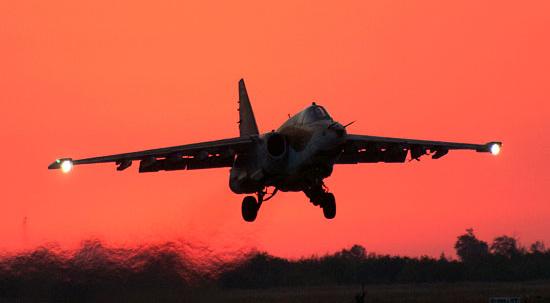"Should they submit an official request to the Russian Federation, we will consider the opportunity to intervene also in Iraq." The president of the upper house of the Russian parliament, Valentina Matviyenko, said this a few minutes ago.
"Although there is no such request, Russia would certainly consider the political and military opportunity to intervene in Iraq."
On 30 September, the Federation of Russia Council unanimously approved the use of air forces in Syria against the Islamic State, following a formal request by President Bashar Assad.
The "Russian Aerospace Force Air Group in Syria" is formed by 50 aerial platforms between aircraft and helicopters. It seems superfluous to note that an intervention in Iraq would involve the deployment of other units that would act as loyalist bases (some of which have already been used by the United States).
"Russian Aerospace Force Air Group in Syria" on October 6th 2015
The Tartus naval base on the Mediterranean coast of Syria is protected by five warships with the Slava-class missile cruiser at its head, the Moscow. The latter is able, thanks to its 64 ground-air missiles S-300 PMU-1 / 2, to impose a no-fly zone that includes most of Syria, Israel and the southern part of Turkey.
The Bassel al-Assad International, airport at 20 km south of Latakia on the Mediterranean coast of Syria connected to the main port of the country, has a force capable of hitting targets on the ground. The Russians have twelve Su-24 Fencer low-altitude tactical bombers, twelve Su-25 Frogfoot ground attack and support aircraft (photo), four Su-30SM fighters and fifteen heavy attack helicopters.
The Kamov Ka-52 'Alligator' takes off from the base of al-Hmeimim. The al-Hmaimim base, probably the most fortified by the Russians, has become the main outpost for all attacks conducted by the Su-34 platforms. It should be noted that the presence of fighter-bombers, despite the small number available, was kept hidden until a few days ago. Moscow has less than 50 Su-34 in service, but in Syria it may have deployed eight to twelve. The air force is supplied by ten tankers.
The Tartus airports and naval base are protected by three battalions (about 500 men) of Navy infantry. The land force also includes nine third-generation T-90 tanks, 35 BTR-82A, several pieces of heavy artillery including multiple rocket launchers and 500 soldiers. All bases are protected by different ground-to-air systems. The Bassel al-Assad International is also used by the Kremlin for all reconnaissance and attack missions of drones deployed in Syrian territory.
The Russians fortified the Al-Sanobar military base, seven kilometers north of Latakia and the Istamo storage complex, three kilometers west. Overall, Moscow has in Syria between the 1500 and the 2000 soldiers. The presence of at least one attack submarine near the Syrian coast is certain.
The last time Putin asked for permission to use armed forces outside national borders dates back to the early months of the 2014 during the Ukraine crisis.
(photo: MoD Russian Federation)












